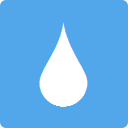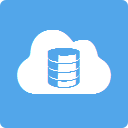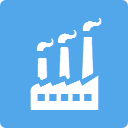Why Water Quality has its Own Month
How many times has water played a part in your routine activities today? Maybe you have taken a shower, made coffee, flushed a toilet, or washed your hands. Chances are you’ve already counted on water multiple times today, and probably didn’t think twice about it.
As we count down the last few days of National Water Quality Month, I would like to elaborate on the importance of this resource, and urgency of this subject. Water is obviously a crucial resource to sustain life. Not only used for daily consumption, but also for general hygiene, recreational purposes, and as the necessary fuel to propel everyday business operations. Most energy generation sources also heavily depend on high water availability. However, water is not a limitless resource. Yet, most of us continue to take it for granted while it grows in scarcity as the world’s population booms.
Only about three percent of the world’s water supply is drinking water, and more than half of this is unavailable, locked in ice at the North and South poles. The remaining supply is distributed in surface water bodies like lakes and rivers, and in underground repositories as groundwater. According to the United Nations, 783 million people do not have access to clean water. This number is likely to worsen in the future as the demand for clean water is expected to rise 40 percent by 2030.
With water being at such high demand, and such limited availability, it is essential that proper water quality be achieved. This is most important for safety reasons, but water quality issues also pose potential liabilities of billions of dollars to businesses worldwide.
Water is key to the operations and success of many businesses in various industries, such as agriculture, oil & gas, and nuclear. It is the responsibility of these businesses to properly manage this risk, and of all the types of water-related data that companies need, measurements pertaining to water quality stand out in terms of their sheer quantity and complexity.
Existing regulations are largely limited to requiring the monitoring and reporting of the contamination of surface water bodies and groundwater by various industrial processes, spills, and other releases. However, the focus has begun to shift from compliance-based monitoring and reporting, to the scarcity and quality of drinking water supplies, and the impact that energy consumption associated with water activities has on carbon emissions. As detection technology improves and human exposure to low-level contamination is linked to more diseases, more testing will be required for ever smaller and smaller concentration levels. All of this means only more and more information that needs to be captured, stored, managed, and reported.
In order to effectively manage all the data for this critical resource, it only makes sense to use the most up-to-date technology. In this case, it comes in the form of a robust, web-based information management system that allows businesses to manage, organize, and visualize their water quality data from a single access point in near real time.
At Locus, we recognize the importance of this resource and the challenges that accompany water quality management. This is why we continue to mold our software offerings to best help organizations responsibly handle this data, and ensure positive decision making. It’s the decisions we make today that will affect the state of this precious resource in the future.



